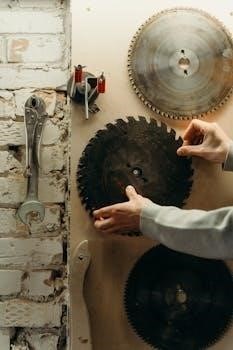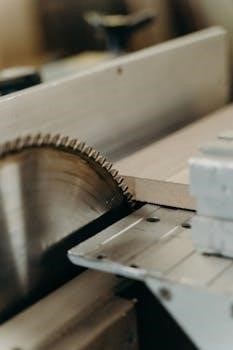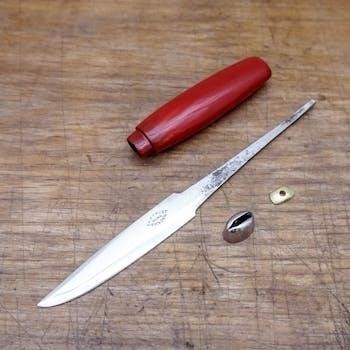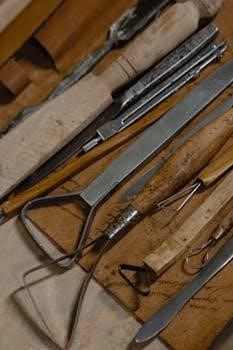
manual lance blade

Manual Lance Blade⁚ An Overview
A manual lance blade refers to a pole weapon, longer and heavier than a spear, designed for thrusting attacks. Historically used by mounted warriors, these lances feature a sharp metal point, lacking the break-off design of throwing weapons. They are employed in various applications from medical to military.

Definition of Manual Lance Blade
A manual lance blade is fundamentally a polearm, distinguished by its intended use for thrusting rather than throwing. It’s characterized by a long, sturdy shaft, typically made of wood, and a sharp, often metallic, point designed for piercing. Unlike spears meant for throwing, a manual lance is crafted for direct, forceful impact, often employed by mounted combatants. The term “manual” emphasizes its direct handling, contrasting with automatic mechanisms sometimes found in other devices. The lance blade itself is the business end of the weapon, designed to penetrate, and is crucial for its effectiveness. This type of lance is not meant to break upon impact, instead it focuses on transferring the momentum of the user into the target. The manual lance blade is a classic example of a melee weapon designed for power and reach, often seen in historical contexts but also finding use in modern applications. Its design emphasizes controlled force and precision, rather than speed or versatility. The concept of a manual lance blade often evokes images of cavalry charges and medieval battles, highlighting its historical significance in warfare.
Historical Use of Lances
The historical use of lances traces back to ancient civilizations, with evidence of their employment by the Assyrians and Egyptians. These early lances were fundamental in mounted combat, though the absence of stirrups limited their effectiveness. The Greeks and Romans also utilized lances, despite not having stirrups, demonstrating the weapon’s early importance. The lance gained significant prominence with the development of heavy cavalry, becoming a symbol of mounted warfare throughout the medieval period. Its employment in jousting tournaments further solidified its place in history, highlighting its use as both a tool of war and a symbol of honor. The medieval lance was typically a long wooden shaft, ranging from 2.4 to 3 meters in length, featuring a sharp metal point designed for maximum impact during a charge. The lance’s historical significance extends beyond battlefield use, becoming an iconic representation of medieval knighthood and chivalry, and it was used by samurai in Japan too. The long reach of the lance made it ideal for charging formations and breaking enemy lines.
Types of Lance Blades
While the term “lance blade” might imply a bladed edge like a sword, in the context of lances, it typically refers to the pointed tip of the lance, not a cutting edge. There aren’t many ‘types’ of lance blades in the sense of having different cutting shapes. However, variations exist in the material and design of the tip, depending on the intended use and historical period. Some lance tips were designed for piercing armor, featuring a narrow, conical shape to concentrate force, while others might have a broader, flatter point for more general use. The construction material of the tip also varies, with some being crafted from hardened steel for durability and effectiveness against armored targets. Furthermore, some lances may feature additional barbs or protrusions near the tip, though these are less common. Beyond the tip itself, the overall construction and design of the lance, including its length and material, greatly influences its effectiveness and purpose. Some lances even had specialized tips for specific purposes, like jousting.
Lance Blade Materials
The materials used in lance blade construction have varied considerably throughout history, largely dependent on the available technology and the intended purpose of the lance. Historically, lance tips were commonly made from hardened steel, chosen for its strength and ability to hold a sharp point, suitable for piercing armor or flesh. The exact composition of the steel would depend on the time period and location, with advancements in metallurgy leading to stronger and more durable lance points. Before the widespread use of steel, other metals, such as bronze or iron, were sometimes used, though these were less effective. The shaft of the lance, which supports the metal tip, was typically crafted from wood, with ash, oak, and other strong, yet relatively lightweight, woods being common choices. The wood might be reinforced with metal bands or leather bindings to prevent splintering or breakage under stress. In more modern applications, such as medical lances, stainless steel is often favored for its hygienic properties and resistance to corrosion. The choice of materials directly impacts the lance’s performance, durability, and overall effectiveness.

Mechanics of Manual Lance Use
Manual lance use involves direct control by the user, contrasting with automatic systems. Techniques like couched lance attacks rely on momentum from a charge. The user’s skill influences the lance’s accuracy and impact during various applications.
Manual vs Automatic Lance Control
The distinction between manual and automatic lance control lies in the degree of user intervention required during operation. Manual control demands direct input from the user, necessitating a higher level of skill and precision. The user dictates every movement, angle, and thrust of the lance, making it a more nuanced and challenging approach. In contrast, automatic lance control often employs mechanisms or systems that assist or completely take over the lance’s movement. This can involve pre-set parameters, automated targeting systems, or other aids that simplify the process. While automatic systems can be more accessible and easier to use, they might lack the flexibility and adaptability of manual control. The choice between manual and automatic control often depends on the specific application, user skill level, and desired level of precision. Some tasks might benefit from the precision of manual control while others may be better suited for automated systems. The preference of manual over automatic is also a matter of user control and engagement, where manual requires the user to be more active, involved in the operation of the lance;
Couched Lance Attacks
Couched lance attacks are a specific technique, typically associated with mounted combat, involving the use of a lance held firmly under the arm. This method maximizes the impact of the lance by transferring the momentum of the charging horse and rider directly into the target. The lance is not swung or thrusted in the traditional sense, rather it is braced against the rider’s body, transforming the entire unit into a powerful projectile. A couched lance attack is often depicted as a forceful, linear impact, designed to unseat an opponent or penetrate their defenses. This type of attack is strongly linked to historical jousting and cavalry charges, where its effectiveness was paramount in breaking enemy lines. The technique relies heavily on the rider’s ability to control their mount and maintain a stable position to deliver a powerful blow. While the couched lance is commonly associated with automatic functionality in some contexts, it can also be performed manually, requiring a greater degree of skill and precision to ensure a successful attack. The user must be capable of positioning the lance correctly and timing their attack with accuracy to take advantage of the charge.

Applications of Manual Lance Blades
Manual lance blades have diverse applications, ranging from medical procedures like heel punctures to military engagements in mounted combat. They also see use in industrial settings for various tasks and are even adopted for certain construction purposes, highlighting their versatility.
Medical Applications
In the medical field, manual lance blades are primarily utilized for procedures like heel punctures, particularly in neonatal care. These devices, often referred to as heel lances, are employed to obtain blood samples from infants, especially premature ones. The manual aspect allows for controlled and precise incisions, a crucial factor when dealing with delicate skin. Unlike automatic devices, manual lances provide the user with greater tactile feedback during the procedure. The choice between manual and automatic lances often depends on the specific needs of the patient and the preference of the healthcare provider. Manual lances are commonly used due to their simplicity and affordability, offering a reliable method for blood sampling. Furthermore, they can be integrated into various medical settings, from hospitals to smaller clinics. The design of these blades prioritizes safety, with features like shielding mechanisms to prevent accidental injuries. The importance of manual lance blades in medical applications underscores their essential role in routine diagnostic procedures and patient care, especially for vulnerable populations.
Military Applications
The manual lance blade holds a significant place in military history, primarily used by cavalry for mounted combat. These lances, typically longer and heavier than infantry spears, were designed for powerful thrusting attacks. The use of the couched lance technique, where the lance is held firmly under the arm, maximized the impact during charges. While not suited for throwing, the manual lance offered a devastating reach on the battlefield. Historical accounts show lances employed by various armies from the Assyrians and Egyptians to the Greeks and Romans. The absence of stirrups in ancient times made the lance a challenging weapon to wield, but with the advent of the stirrup, the lance became a dominant weapon in mounted warfare. The design of military lances prioritized a sturdy shaft and a sharp metal point, optimizing their effectiveness in breaking through enemy formations. While less common in modern warfare, the legacy of the manual lance blade continues to shape our understanding of military history and battlefield tactics.
Other Uses
Beyond its primary medical and military applications, the manual lance blade finds diverse uses in various fields. In outdoor activities, some enthusiasts use adapted forms of lance blades, especially those with gut hooks, to manage tasks like cutting ropes or removing hot objects from fires. Certain types of lance blades, often featuring specialized designs, are incorporated into tools for industrial use, such as those used in cleaning or maintenance, where a long reach or piercing ability is required. Historically, variations of lance blades have been integrated into agricultural tools for tasks that require a piercing or cutting action. Furthermore, the lance principle, which involves a long reach and focused force, has inspired the development of other tools used in various crafts and trades. The versatility of the manual lance blade, whether in its original form or as an inspiration for other designs, highlights its adaptability beyond its traditional roles. This includes its use in some forms of construction and even in some specialized sporting equipment.
Industrial and Construction Uses
In industrial and construction settings, the principles of the manual lance blade are applied in specialized tools and techniques. Certain cleaning processes use manual lance-like devices, often with high-pressure water or other fluids, to reach and clean hard-to-access areas within machinery or structures. These lances are often equipped with nozzles and attachments to control the flow and impact of the cleaning agents. In construction, tools that require focused force or piercing actions, such as some types of anchoring or crack repair tools, are designed with the lance’s mechanics in mind. Maintenance work on large machinery can also involve the use of lance-like tools, sometimes with specialized blades or attachments, for tasks such as scraping, cutting, or reaching into tight spaces. The concept of a long reach and the ability to apply focused force, as embodied in the manual lance blade, is therefore adapted and re-imagined in a variety of industrial and construction applications. These tools provide efficiency and precision in tasks that would otherwise be challenging or impractical.
Leave a Reply
You must be logged in to post a comment.